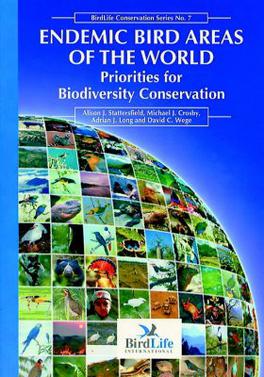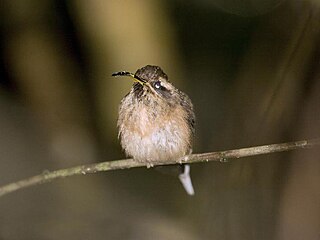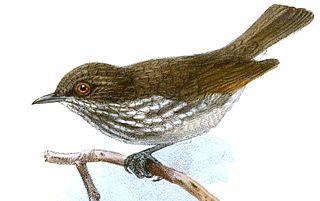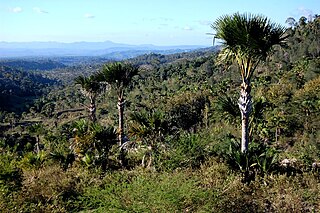
An Important Bird and Biodiversity Area (IBA) is an area identified using an internationally agreed set of criteria as being globally important for the conservation of bird populations.
An Endemic Bird Area (EBA) is an area of land identified by BirdLife International as being important for habitat-based bird conservation because it contains the habitats of restricted-range bird species, which are thereby endemic to them. An EBA is formed where the distributions of two or more such restricted-range species overlap. Using this guideline, 218 EBAs were identified when Birdlife International established their Biodiversity project in 1987. A secondary EBA comprises the range of only one restricted-range species, or an area which is only the partial breeding range of a range-restricted species.

Endemic Bird Areas of the World: Priorities for Biodiversity Conservation represents an effort to document in detail the endemic biodiversity conservation importance of the world's Endemic Bird Areas.

The red-capped flowerpecker is a small passerine bird endemic to, and widespread within, New Guinea and adjacent islands. It has recently been split from the olive-crowned flowerpecker Dicaeum pectorale.

The dusky-throated hermit is a species of hummingbird in the family Trochilidae. It is endemic to Brazil.

The scarlet-collared flowerpecker is a species of bird in the family Dicaeidae, about 10cm long and is endemic to the Philippines where it found only in the tropical moist lowland forests in Mindoro, usually occurring below 1000m in the canopy and edge of the forest and in open country with scattered trees. Along with the critically endangered Cebu flowerpecker, it is one of the two threatened flowerpeckers in the Philippines and is declining primarily due to habitat loss.

The mountain shrike or grey-capped shrike, is a species of bird in the family Laniidae. It is endemic to the Philippines found on the islands of Luzon, Mindoro and Mindanao. Its habitat are tropical montane secondary forest, forest edge and grassland above 1,200 meters above sea level.

The Palawan tit is a species of bird in the tit family Paridae.

The Visayan pygmy babbler is a bird species endemic to the Philippines on the islands of Leyte and Samar. It was conspecific with the Mindanao pygmy babbler under the common name of "pygmy babbler".Its natural habitats are tropical moist lowland forests and or tropical moist montane forests.
Bemarivo Reserve is a wildlife reserve 12 km from Besalampy in the region of Melaky in the north-west of Madagascar. It was created in 1956 and covers an area of 12,080 hectares. The reserve is known for its fauna especially endemic birds.

The Halmahera rain forests is a tropical moist forest ecoregion in Indonesia. The ecoregion includes the island of Halmahera and neighboring islands, including Bacan, Morotai, the Obi Islands, Ternate, Tidore, Gebe, and many smaller islands.

The Timor and Wetar deciduous forests is a tropical dry forest ecoregion in Indonesia and East Timor. The ecoregion includes the islands of Timor, Wetar, Rote, Savu, and adjacent smaller islands.

The Visayan bulbul or Steere's bulbul, is a songbird species in the bulbul family, Pycnonotidae.

The Seram rain forests is a tropical moist forest ecoregion in Indonesia. The ecoregion includes the island of Seram and neighboring islands.











